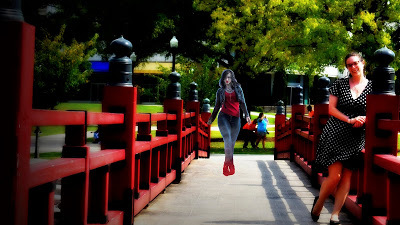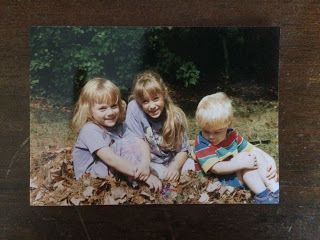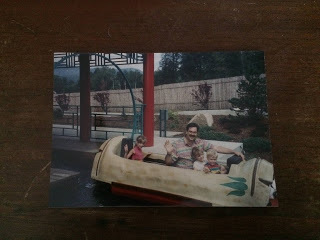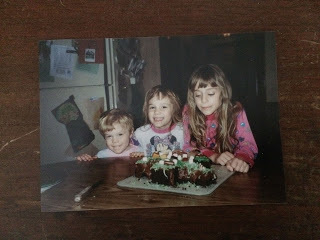Jessica Donegan's Blog, page 3
January 7, 2020
My 2020 Writer's Goals
 image from publicdomainvectors.org
image from publicdomainvectors.org
I have my own mental and physical calendar that is different from the traditional western yearly calendar. My system allows me to reflect on the close of last year and to structure my plans. If my goals appear more thought out than yours, know I’ve been meditating on them and planning what they are and how I’ll measure them for 50-ish days.
1. 1. Launch my debut novel Follow Me: Tattered Veils. While I often treat this as a fait accompli, it’s far from that. I’m still creating blog posts and considering what kind of author media I need. Even after the book becomes available for purchase, there are some blog posts and little extras I want to include as a “read along” style content.
2. 2. Complete the first draft of both Follow Me: Gods and Monsters and Cress Legacy (working title). Both are novel length projects with some word count already invested. I imagine I’ll need 130,000 more words to complete both. Given my calendar structure I need to write about 3,000 fiction words a week. I’m most concerned with achieving these draft goals.
3. 3. Co-teach “Hello World and Introduction to Creative Writing” with Ashley once and finish all PowerPoints and course material for “Aggressive Self-Editing” with a possible course run in July/August?
4. 4. Weekly blog posts going into the release of “Follow Me: Tattered Veils” and bi-weekly posts after its release. Remember I write for 2 blogs. That means I will still have a new post up every week, but I will change which blog I’m posting in. I am reducing production goals to improve consistency.
5. 5. Social media circus has to come back up. Each week I will dedicate 2 hours to Twitter, an hour to Facebook and an hour to Instagram. I don’t have a consistent schedule, so I will have to change the days and times I provide for each.
6. 6. Reading and reviewing books. There are 44 weeks in my calendar year, I think it’s appropriate to read 44 books or a book a week. And I’m committing to 1/3 of those books being in either my genre (fantasy/urban fantasy) or being independently published works.
Talk to me! What are your 2020 goals? Do you have any advice on how I can achieve my own plans?
Want to see more? Check out my 2019 writing goals and my 2019 wrap up.
Curious as to how I plan to achieve these goals? Check out my post on how to create realistic 1st draft goals here. I also have a post on how Habitica, an online fantasy goal tracker can help and I have one more post reviewing my own personal planning system.
Want to see my year in books? I have my 2019 year here and my top 5 for 2018 along with a full detail list of 2018. For more what on what I'm reading, check out my GoodReads profile.
Published on January 07, 2020 09:36
January 1, 2020
2019 A Year's Review in Books
 image via pubaicdomainvectors.org
image via pubaicdomainvectors.orgThis year my goal was to read 48 books and I surpassed the goal by reading 50 books. Reaching this number of books with the active year I had was hard. Most days I wanted to stare off into space like a half conscious zombie, too lazy to even shamble off for brains. When I read, it was often rereads of old fanfiction favorites (yes I read and love Harry Potter fanfiction still and no I did not count a single line of fanfiction as reading a book though many of my favorites are longer than the books that made the list).
It was an ugly year for books. Over half of my book list is nonfiction and often I read “nonfiction” on Kindle Unlimited to fact check and argue more than to inform. Public service announcement: don’t use book selection on Kindle Unlimited for research. While they have some great books, the ones with dangerous misinformation FAR out weight the hidden gems.
This year’s review will differ from last year’s summary. I will offer three books I loved, three I liked, and three that disappointed.
What I Loved:
1. Secrets Bound by Sand: This is the 4th installment of T. A. White’s “Dragon Bound” series. She maintains a steady quality and pacing. While I didn’t love this book as much as either book 1 or 3 in the series, it was a great addition. Tate remains a strong willed female character with a small core of trusted friends and a larger group of maybe allies. I like how she and her dragon interact, though I missed some of the series standar characters as Tate spends a lot of her time on her own. Tate is at her most compelling when there’s a large cast for her to play against. This smaller set piece leaves less for her to work against or with, which lead to a smaller feeling story.
White writes action and adventure series that rely on puzzle solving from smart and reflective characters. Her world building remains strong, detailed, and compelling. Can’t wait for more.
2. The Numia Trilogy : A break out new favorite. I’d no idea Charlie N. Holmberg was working on something new. Sandis is a smart if too trusting protagonist. Her plight drives these books, and she’s a lovely character to follow around. I found Rone’s perspective annoying and often skipped his chapters. He was like an unwelcome intruder to what was otherwise a beautiful narrative.
Upon reflection, the first book is the weakest of the series. Readers: if you don’t care for the split perspective (like me) it gets better as the series continues. I can’t remember if Rone started being interesting (he is in book 3 and maybe Holmberg put in unneeded split perspectives in books 1 & 2 because she knew she needed them in book 3) or if I learned to like him more. All I know is that what was jarring and infuriating in book becomes less onerous in further installments.
And can we talk world-building? Everything in this made up place works so well together. All the pieces fit but not in a cookie cutter “the author aligned the stars” artificial feel some fantasy worlds have. Also, the length of the series is perfect. Homberg gave us just enough for three books. The world unravels a touch in the last third of the last book. My suspension of disbelief stuttered, but pacing and stakes kept me invested till the last page.
3. Folk Witchcraft: I liked this book so much I bought it. It’s a British centric perspective on witchcraft but not Wicca centered. No calling quarters, casting circles, or God/Goddess assertions. No threefold law. Instead of offering generalization and all kinds of seasonal advice that only applies to people living in the right climate, Horne gives practical advice for meditation, reflecting on what one’s local seasonal shifts are, where one’s local land deities may be, and how to contact them. His book reads less like someone’s ideal of what magic should do or be and more like what a person could expect/achieve.
While the book was spiritually nourishing for me, it was also very inspirational as a writer. The short stories or little vignettes that could come out of some of these practices are enticing. A few short fables could be a lot of fun. If you’re an urban fantasy writer looking to create a magical system, I recommend Folk Magic as a good jumping off point.
What I Liked:
1. Firefly Magic : Another book I ended up buying. While I started reading this book way back in 2017 and the book was under Kindle Unlimited, it is no longer available via Kindle Unlimited. While I’ve only read the book in little patches, it’s been a huge player in my writing life. This book got me thinking about self publishing Follow Me: Tattered Veils back when my first draft was cut open and bleeding all over my keyboard. It made me take publishing my book seriously and encouraged me to research an editor and cover artist. It lead me to think of marketing and promotion in new and more positive ways. Anyone who feels sensitive about pitching their creative whatever, should check out this book.
2. The Foretelling : Did you know that Alice Hoffman has some of her books on Kindle Unlimited? The Foretelling is a stunning example of everything I love in Hoffman’s work. Her narratives are thoughtful and dreamlike. I feel like I’m swimming though her work and it spins a story I don’t want to put down until the last page. Then I just want to sit in silence and hold onto the feelings her style inspired in me.
I argued with myself whether this book belongs in the liked or loved category. I love Hoffman’s narrative style and as a result I love everything I’ve ever read by her. However, some of her works are more compelling than others. I recommend The Foretelling to Hoffman fans, to people who like Amazon myths, and to people who like alternative history stories. I loved the work, but I can admit the subject material isn’t super compelling outside of Hoffman fan-girling and girl power circles.
3. The Last Black Unicorn : I’ve wanted to read this book for years, but not enough to shell out $11.99. When I saw it hit Kindle Unlimited, I scooped it up. Overall the book was mid-range. There were parts where the narrative dragged, but then there were a ton of funny and compelling elements too. I waffled on placing this book because I almost put the book down three times and if I had stopped reading at those points; I don’t think I’d have lost much.
Still it’s a solid book. Both funny and poignant. If you enjoy rooting for an underdog, you’ll like this book.
What Disappointed:
1. The Forest of Embers : This book took a series I loved and made me feel “meh” about the whole thing. I don’t know if I will pick up the next in the series when it comes out, and that’s a shame.
The book was clumsy. It jumps forward in time but what it skips over seems more interesting than the story it tells. Elements of it seem shoehorned in. This whole gods and dragons part introduced doesn’t feel like it meshes with the faery magic, magic people, or in between that was originally introduced. Part of what made the story so good was a cohesive world and this book has a lot in it that doesn’t feel like it belongs in the same universe.
Characters don’t feel familiar or beloved. Personalities and views I’d seen develop and change over seven books were turned back so we could reread the same character arc or create artifical tension. There’s a continuation of a love triangle that for my money was decided back in book four.
The book is a mess. I wish we’d gotten a same world with new characters or even something entirely unrelated. Roethle is a talented writer, but this wasn’t good.
2. Sara Fine: I’m not Fine’s audience and I have to accept that. I like her writing style a lot. There are flashes in her work I want more of and that’s rare enough that I read through many over her books (2 this year and 3 last year). However the juvenille tone (which is perfect for her target audience), the mushy romanticism (again what people are there for), and the problematic tropes are too much for me. I won’t pick her up again. 5 books is enough to teach me these lessons.
I would recommend Beneath the Shine and Sanctuary for teens, but her Reliquary series is too problematic for me to recommend it to anyone.
3. Rebelborn : Another disappointing conclusion to an otherwise great series. Bartol kind of wrote herself into a corner here (I say that but I have three different stories I would have preferred to read from this setup). This story has pretty much everything I didn’t like about the last 2 movies in the matrix series crammed into it.
There isn’t the same moral gray area in this book that the other two offered. This book isn’t thoughtful. It doesn’t encourage the readers to think on the use of technology, or what it means to staunchly support a side even when it’s no longer doing good.
It has a weird “solution” to the love rectangle it introduced that felt a lot like having one’s cake and eating it too. And the book overlooks abusive behavior or stalking behavior from two of the love interests. We never address that all three of the love interests at some point physically hurt and intimidate Roselle. We don’t address the verbal abuse or possessivenenss of these characters. Like kudos for being sex positive but major boo in understanding what’s romantic and what’s creepy/unhealthy. Being in the middle of a war only excuses so much.
It has a weird solution to character deaths I didn’t like. And it uses a version of a comic book multi-verse that feels more cheap somehow.
After the first third of the book, there’s no sense of tension or stakes. Everything wraps up neat, clean, and happy. If you write a book where a massive war and implied genocide happens, it can not be all sunshine and rainbows in the ending.
Another young adult book series I looked forward to recommending but unfortunately can’t recommend.
Published on January 01, 2020 12:31
December 24, 2019
2019 In Review! Did I Meet My Goals?
 Me and Roxi in Big Spring Park all rights reserved
Me and Roxi in Big Spring Park all rights reservedIn January last year I set up some personal writing goals. For fun I want to review them and see what I accomplished vs what needs work.
Accomplished:
I wanted to finish my second draft of Follow Me: Tattered Veils and succeeded (what's the difference between the 2 drafts? Talked about that here). More than that! This year I:
-Sent Tattered Veils off to a copy editor (some further blogging about that experience here) -Made the corrections from the copy editor-Have a Copywrite on Tattered Veils—which means a copy of my work will be available in the Library of Congress-Commissioned a cover artist and have cover art complete for Tattered Veils-Got a publishing team together and have that team: -Created a website for me and a landing page for Tattered Veils and future works -Created an author’s Facebook page -Discussed, created, and sent A.R.C.s (advanced reader copies) to people for an early review - Had a proof copy of my novel in my hands -Chose a date of publication (and I’m thrilled to announce I will self publish Follow Me: Tattered Veils on Amazon this Feb the 29th a leap year ^_^)
I taught a free Intro to Creative Writing class with Ashley and we plan to run our course again this year. It is exciting to continue refining our class. Hopefully this class will turn into a way we can give back to the writing community, inspire other writers, and create a closer community of people with similar goals.
I met my book reading goals for 2019 and reviewed most of the books I read (check out my Goodreads profile). I also created shelves for my read Goodreads books so they are easier for other readers to sort through.
2019 was a great year for esoteric folklore. I learned about this thing called “#folklorethursday” on Twitter and it’s awesome. The community connecting and telling different little bits of trivial there is soooooo cool. I read a couple great pagan books that reconnected me earth based traditions, some will even work in my southern environment even if British weather is colder and rainier. I also had the chance to write up a bit of info on traditional holidays and some different writing prompts to accompany the holidays. My well for inspiration seems full.
Opportunities:
I didn’t maintain a constant blogging habit. At my personal blog, I posted about 11 times. I posted 12 times in the N.A.W.G. blog. Along with less frequent posting, I’ve dropped the ball in my social media game. This may have cost me an audience or sense of reliability. I promise I’ve been very busy in my writing life, it just hasn’t all been on display for the people who might watch at home.
My goals for blogging and social media were too lofty. Given how much socializing even online takes out of me and given how each blog post takes time I could write creatively off the table, it was never realistic I would both complete my Tattered Veils goals and maintain an active blog presence. No regrets over which I chose. Now I have a book, if I’d stuck with the blog who knows how far away holding a copy of my work would have been?
While blogging and social media has to play a role in my writing goals, it will have a lighter touch in 2020. If these posts help or interest other people, I see it as “worth it,” but I can’t say this style of writing is a “passion" of mine.
I kept making new goals for myself as the year went on. Some of that was beneficial and some of it was a time waste under the guise of “being efficient.” There were days that planning took the place of “doing”—so not the goal of making plans. As this new year rolls in, I plan to compromise with the person who wants to plan vs the person who wants to do work. More on that in 2020 goals though.
Overall, I think I had a powerful 2019, even if it wasn’t everything I wanted. How did your year go? What was a major accomplishment for you? What was a major failing? What are your plans for 2020?
Not sure how to create good yearly plans? Try my post that helps break down goal planning. Or try a post I have exploring Habitica and how it can help you meet your goals.
Curious about my my 2020 goals, check out this post! Wondering how I track my goals? I've written more here.
Published on December 24, 2019 12:24
December 18, 2019
Garden Gnomes and Other Evils
 Emma, Jessica, and Kyle. Photo taken by Elena Lewis.
Emma, Jessica, and Kyle. Photo taken by Elena Lewis.
It scared me to go to my great grandmother’s house. Her home was clean and silent, which unnerved me, but the true terror awaited me in her gardens. She had lush vibrant flowers I enjoyed exploring, but waiting in those flower beds was something old and malevolent.
Garden gnomes.
Before Travelosity, before Gnomeo and Juliet, and before R. L. Stine, I knew the true depth of depravity in these ceramic figurines. I’ve always suspected figurines with humaniod forms, but unlike my dolls or horses, these gnomes were taller than me and had small squinty eyes, pointy ears and hats, and it was always pointing and laughing with its white teeth. What was so funny and why did the thing need teeth? It was alive and coming to get me.
When my great grandmother passed, my mother brought the gnomes home and put them in our gardens.
Seems simple as an adult, but as a child these gnomes materializing was a nightmare. One morning my home was free and then our gardens were contaminated with the spectral evil I knew they held in their stone hearts. All this time my great grandma had protected me from them, appeasing them and keeping them on her lawn, but with her gone, they were here and going to kill me!
I wasn’t going down without a fight, though. I gathered my sister and brother and we launched a full war campaign against the ugly invaders. We threw rocks at them.
When they didn’t retaliate, we got bolder. My sister and brother would load up in the peddler car and I‘d ram them into the gnome, hoping to knock it down. They would flail their arms and scream, stuck staring at the killer’s dead eyes. I fled from the scene screaming how it would get us. They would remember how to use the peddle car doors and escape the staring contest. We spent hours roping the car away from the gnome and start the process again. Slowly, the thing crumbled. Sweet victory.
Except, my mother loved her great grandmother’s gnomes. She did not understand why it deteriorated—could it be acid rain?—but she would preserve them. While we napped, she would glue the gnomes back together.
Words can not express the doom we felt when we woke from nap time to find the garden gnome whole again. Before, there’d been a chance the gnome wasn‘t a living creature— I was known to have a wild imagination—but after the gnome regenerated? And if there’d been a chance for peace between gnomes and children, it was long gone. How could it want anything but our demise after all the times we’d torn it down? It was him or us and he seemed poised to win.
But how does this gnome saga end? Eventually our nightmares built and my mother learned about our campaign against garden gnomes and our all amorphous childhood fears of stone golems coming to life in the night and “getting us.” She laughed. We all laugh about it now.
Except I also tear up when I tell this story, because terror that bone deep marks a person.
What does this have to do with “Follow Me: Tattered Veils”? My battle with garden gnomes went on for months. For a child this was a brutal war of attrition. Seasons changed and our enemy remained laughing and menacing. I had the stamina as a child to face this horror. My capacity to stare down all that terrifies me grew as I’ve aged. Unshaped consequences that made me quake as a youth still live in dark corners of my mind just outside my ability to grasp. Linger with me and face the unnamed possibility.
And ask: if a sheltered innocent child could inspire months of imaginative nightmares, what might a more worldly adult produce?
Like this post and want more? Check out here where I reminisce over that time in our lives where we still believe in Santa. Or look at the terror a closet monster can add to one's childhood here.
Want more information on when my book is releasing? Check out my website jessicadonegan.com and subscribe for updates.
Published on December 18, 2019 10:48
December 11, 2019
Closet Monsters: Gone Too Far?
 Jessica, Emma, Maurice, and Kyle going on a floom ride. Photo taken by Elena Lewis.
Jessica, Emma, Maurice, and Kyle going on a floom ride. Photo taken by Elena Lewis.Remember when the closet monster was a real prospect? There are many varieties of the beloved creature.
First is the tidy child’s monster. Their closet door presses shut, but somehow in the shadowed night, the door looms like a dark doorway, waiting for brave children to traverse to a realm of unspeakable horror.
Next is the messy kid’s monster. They shove their toys into the closet at the last minute, and the door never quite closes. Frustrating in the day when they try to convince their guardians the room is clean and can they please go out and play. At night, the door gapes open, a toothless maw. The dark beyond is bottomless, any evil could await them.
Third is the run down home’s monster. This closet door never fully shuts. Maybe the hinge isn’t lined up or maybe the door lost its latch. No one cares about the why. These children go to bed with a closed closet door, secure in their knowledge that nothing will harm them and wake up for water or to use the restroom, to an open door. They race for the light and throw the switch like a medic to a defibrillator. The world is incandescent, but it’s too late. Something old and terrible lingers. No light or company will ever make what crawled out of the closet go back in. Creaky floorboards are its footsteps, drafty windows become its breath. Whatever that thing is, it’s living in your house now, and there’s no way to exorcise it.
The closet monster fascinated me. How did it creep in at night and why did so many children assume it fled in the morning? Does light hurt its skin like a vampire? Does it sleep during the day like a bat?
And what did the monster want? Was he guarding something on the other side of the darkness? Did he eat socks, is that why I could never find matching pairs?
“Oh no,” my uncle told me, “he just wants to get you.”
“Get me?” I asked.
“Yeah you know, take kids. He got my younger brother,” he said.
“No you’re the youngest brother! Everyone says so,” I said.
My uncle shrugged.
“Yeah, now I am,” he said with a wink.
My siblings and I were hooked. Yes, the closet monster lived in everyone’s home, but my grandparents' home, became its main den. When we were there, we hunted it in cupboards, basements, and closets. Why, because there was a missing uncle we might save. Even if that uncle was long gone, we could at least “get” the monster back and keep it from ever taking another child. Bring the fight to its home and all those great metaphors. As eldest, I was good at rallying the younger ones to a worthy campaign.
And my uncle played his part. He’d hide in basements and closets waiting for us and then roar and grab us. We’d charge the monster and hit it or kick at it and he’d let the trapped sibling go and we’d run out, believing we’d narrowly escaped the monster’s clutches.
As I grew older, and began to understand the game we were playing, I added new rules to keep my siblings believing for longer. We would use flashlights and “light” formations to keep the monster back. In reality, my uncle couldn’t sneak up on us if we all used our flashlights together, but the reasoning I gave was that the monster’s eyes were photo-sensitive. The light blinded it, giving us time to move past it.
When one of my siblings would doubt the closet monster’s existence, I’d dare them to go in alone to the closet. There in the dark my uncle would shake clothes hangers and growl, stomping closer and further away. The terrified sibling would go to the door and try to open it, only to find it stuck closed (I was barricading the door).
They’d scream and plead for help and I’d say things like:
“It’s sealed the doors, I can‘t open them! I think it’s mad you don’t believe! Quick say you believe in it before it gets you, maybe then the door will open!”
My sister or brother always agreed.
“I believe, I know you‘re real, I’m sorry, please!”
And I’d let them out. We’d go eat cake, because sweet things help you recover and then we’d play in the sprinkler, because the monster can’t get you outside. It hates fresh air.
So how do I capture this dark childish terror for adult readers in “Follow Me: Tattered Veils?” Instead of using an uncle to help make the monsters more real, I use old myths. Stories told and retold in many time periods with different players but the same over reaching themes. Hear the same story enough but different people and anyone will wonder— is this real?
And I use humanity’s limited scope of empathy. I terrified my siblings, not just with stories of monsters, but actions that validated those fears. I thought nothing of this fun game, but there was casual cruelty in the act. We all carry a thoughtless capacity to scar each other.
Lastly, I use the closet monster himself. Because the fathomless darkness where all kinds of good or evil could spawn lives in my heart and I think it might live in your heart too. Don’t we all have a certain wardrobe we think might take us to Narnia or a certain set of words we think will release Bloody Mary? “Follow Me: Tattered Veils” lives in a world where we investigate the wardrobe or we say the right words. The roads to different possibilities open and I hope you’ll walk one of them with me.
Like this post and want more? Check out here where I reminisce over that time in our lives where we still believe in Santa.
Want more information on when my book is releasing? Check out my website jessicadonegan.com and subscribe for updates.
Published on December 11, 2019 10:35
December 4, 2019
Remember the Magic of Santa?
 Kyle, Emma, and Jessica, smiling over a home made Christmas tree cake. Photo taken by Elena Lewis. I took a picture of a picture to add to this story.
Kyle, Emma, and Jessica, smiling over a home made Christmas tree cake. Photo taken by Elena Lewis. I took a picture of a picture to add to this story.I believed in Santa until I was 13. Too long, I know.
So was I just a gullible kid? Well yes, but it was more than naivety. I kept believing in Santa because I liked how it felt to believe in him. The child like wonder and sense of possibility made me feel special.
As a quiet, nervous child (and adult) I spend a lot of time trying not to be noticed. Attention= …bad things. But lack of attention has its own frustrations. I spent a long time watching children get credit for deeds I did every day without a hint of recognition. Other children and adults may never see me, but Santa did. He is always watching, and I was on his good list, so someone somewhere knew about all my hard work and valued it.
And those bad kids that seemed to get away with every cruel thing. You know the ones with ugly smiles, taunting words, and a thoughtless push. Well, they’d get coal. Something to say, “I know what you did and I know deep down, you aren’t good.”
As I aged, there were doubts, but I wanted Santa, so I created stories and games that helped preserve him for me and my siblings past the natural expiration date such belief holds.
We did normal things, like write letters to Santa or stay up late and try to catch him in the act.
One year we came home to plastic reindeer toys under our pillows and our parents said “It’s so late, Santa must have stopped by, realized you weren’t home, and left this to warn you you needed to be in bed by the time he stops by again if you want Christmas presents.”
I think my parents wanted us to go to sleep quick, but this visit had the opposite effect on me. I was alive with possibility. How does Santa map his trip? Does he stop by the same time each year? Why couldn’t he leave the toys for us if we were not home? The stories!
That year I added to our childish Santa myth. We stayed up late, but in our room with the lights off. Each bump and shake of our old house was Santa and the reindeer on the roof. Did he know we were home but not asleep yet? Was he waiting for us to get in bed and close our eyes?
Next year I instigated the “Santa’s Helper” program. All three of us became “elves in training” without own special sleigh bells. The point of the program was to spread cheer and good will through selfless deeds like reaching out to charities, being considerate to each other, and looking for kids less fortunate to do something kind for them. The secret part of the club involved a bunch of secret missions from Santa we had to fulfill, and different signs we were closer to our goal of “elf.” I claimed a secret communication with Santa through “phone calls” and “notes.”
How did me faking a secret agent like program where Santa was the “Charlie” of our “Charlie’s Angels” like group keep my belief in Santa? As the person who made it all up, I should know it’s fake right? But that’s the beauty of a child’s brain. I could be aware both that I was making it all up and also believe there is a Santa and I was doing his work.
My goal as an Urban Fantasy writer is to bring you back to that time when Santa could have been real. An adult “Santa’s Helper” club.
How do I manage that?
In “Follow Me: Tattered Veils” ground the story with a strong sense of place. You can visit all the locations mentioned in Huntsville, Alabama. All lies need truth in them right?
But I’m dedicated to the experience. I commit to a sense of seasonal time too. “Follow Me: Tattered Veils” begins in January and ends on Halloween. As seasons change and time passes, I reference temperature, weather, and even which flowers bloom. Where and when the characters remain constant so readers feel confident in their sense of place.
My characters are everyday humans filled with flaws Joe and Jane everyman has. They struggle with money, job satisfaction, friendships, and addictions. Not a major or minor character stands without a rounded soul, capable of being on Santa’s “naughty or nice list.”
I introduce more fantastic elements gradually. It starts with religion, an element of magic many adults accept, but I build from there to less “real” experiences.
I hope by the end of the journey your sense of reality undergoes changes and you’re left wondering. Is there more in this world than the mundane? Could Santa or something like him be real and is he always lurking just beyond our perception?
Want more information on when my book is releasing? Check out my website jessicadonegan.com and subscribe for updates.
Published on December 04, 2019 10:26
July 12, 2019
Behind the Scenes: Writing "Melody's Crescendo"
 image in public domain via publicdomainvectors.org
image in public domain via publicdomainvectors.orgThis post speaks to my personal writing process for “Melody’s Crescendo” and it contains spoilers for that work. For a deeper understanding of the elements included or explained in this post please read my flash fiction (it’s short and free ^_^).
Our writers’ group looks at open calls for submission and all of us write toward one of the prompts together. We share were we are in process, provide feedback on how each person took the same prompt in a different direction, and encourage each other to submit out completed stories.
Melody’s Crescendo hatched from a call for action stories. Zach Standfield picked out this prompt. It’s little surprise since he writes crime themed stories, that he thought a call for a short action story would be ideal. The other writers in my group have their stories from this exercise published. I felt it was only fair Melody’s Crescendo see the light of day too.
Writing short, action driven narratives is not my strong suit (see what I write instead here). I ramble and my interests align with themes and ideas more than actions or characters. But I wasn’t about to admit I couldn’t write a short action piece, so I workshopped some ideas. Both my mother and my husband had to hear a plethora of pitches and complaints for this prompt. But I'm not a quitter and no one will ever accuse me of not completing a prompt (though chances are good I'll violate the spirit of the prompt just to be contrary ^_~).
The action genre has a lot of leading dudes. War and spy movies come to mind first when someone says “action genre” with “crime fiction” a close third. I knew I wanted to subvert those expectations. So I made my main character female, and I dropped her into college.
I set the event at a party because I wanted my character to be the 'good guy'. If Melody hunts out her ex, then she’s looking for trouble. If she’s in her sorority house enjoying a party and the ex shows up, he’s the asshole. Because the fight happened in Melody's home turf there's underlying tension to the scene. If Melody isn't safe here, where can she retreat to? Is this one bad relationship going to chase her out of college?
There’s a lot of swearing. College drinking culture = potty mouth (tell me I’m wrong youth).
The names were the most fun part of this story. Melody is in my top twenty girls' names or all times, and the plays off the name seemed to flow. Her friend’s name is Robin because we know birds for chirping melodic beats.
The work itself: Melody’s Crescendo refers to a musical notation that looks like < under a few stanzas of music. It’s meant to indicate how a song gradually gets louder throughout the marking. Melody’s story gets louder until she’s thrown in the bathroom. I wanted to title the work “Melody’s Accelerando Crescendo” because the story beats pick up speed and volume, but that’s not a pretty title. Plus, it’s a little on the nose.
Music interests me in relation to an action based story because it has inherent movement without violence. I liked the nod to nonviolent action even if I wrote a story that incorporates a fight scene. I also like music because fight scene are choreographed like a dance. I don't have to explain the connection between music and dance or how choreographing a fight is pretty much what I did for this story, right? These were little elements to keep me engaged in writing something I'd usually avoid.
I held onto the Melody’s Crescendo for years without ever submitting it for publication. My genre niche is in fantasy and there are no fantastic elements in this story. Melody’s Crescendo leans into my 'feminist agenda,' or feels like it does anyway since the story covers rape, domestic abuse, and female friendship. It’s a good story, but I didn’t want to be the girl author who writes about women. More recently, I’ve seen how stupid that is. I am an author who writes about “women’s issues” (FYI these are human issues not women only ones and I hate that anytime you want to speak about them you have to label them women's issues) and female identity. While I don’t think it’s my primary goal in work, it’s in all my writing. Melody's Crescendo doesn't have the luxury of fantastic elements to couch some of the issues my protagonist faces, but her story shares more commonalities than different with other characters I've written.
I hope you enjoyed Melody’s Crescendo and thanks for your curiosity in how it came together. For more short stories try Halloween Spirit (an about is here) or our writer’s group round robin with my ending.
Published on July 12, 2019 06:00



